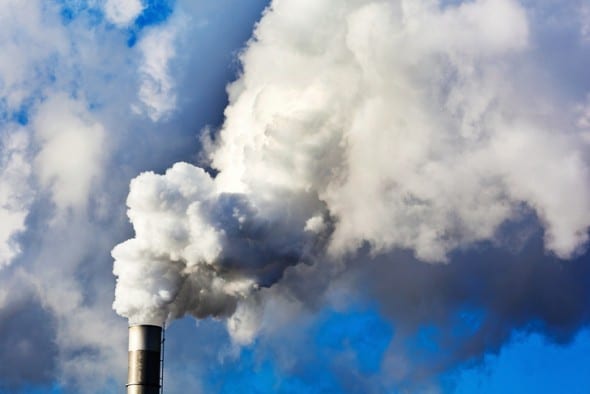The Australian government has achieved its cheapest price yet in the largest auction of emission reductions to date, but critics say that the real cost of the policy is something completely different – $90 for every increase in emissions rather than a cut.
 The Clean Energy regulator announced on Thursday that it had sold contracted to buy 50.47 million tonnes of abatement at an average price of $10.23 a tonne, or a total of $516 million. This takes the total in the three auctions to date to $1.7 billion at an average price of $12.10.
The Clean Energy regulator announced on Thursday that it had sold contracted to buy 50.47 million tonnes of abatement at an average price of $10.23 a tonne, or a total of $516 million. This takes the total in the three auctions to date to $1.7 billion at an average price of $12.10.
Like the previous auctions, most of the reductions were achieved through vegetation programs, with this auction including a large amount of abatement from regrowth along the coastline and in tributaries along the Great Barrier Reef. Those projects have been aggregated by GreenCollar.
Environment minister Greg Hunt trumpeted the results,, saying it was proof that the government is “hitting our targets and tackling climate change without Labor’s electricity tax.” He said it also showed it was not a handout to large polluters.
But critics are not so sure. The Climate Institute, in response to Hunt’s previously de-masked claims that Labor’s carbon price cost $1300 a tonne, said the result of Direct Action and its Emissions Reduction Fund was to increase, rather than decrease, Australia’s emissions levels at a cost of $90/tonne.
“After three auctions, the Emissions Reduction Fund has now used up 67 per cent of its budget, but has contracted for only 3 per cent of the emission reductions needed for Australia to meet the objectives of the Paris Agreement it has just signed,” said Climate Institute CEO, John Connor.
“Based on the logic of claims made by the government, taxpayers have funded Australia’s rising carbon pollution at about $90 per tonne.
It reached this figure by comparing ERF spending to date with the reported change in national emissions since the ERF has been in operation, which have shown a constant rise, including a 5.5 per cent lift in emissions from the energy sector.
“This calculation uses the same logic as that underpinning the Government’s incorrect “untenable” claim that the carbon price cost $1300 per tonne to reduce emissions,” the TCI said.
“Both calculations are overly simplistic – they ignore the fact that both the carbon price and the ERF only tackle a sub-set of national emissions, assume budget revenue or spending is a net cost, and also ignore other factors driving emissions up and down.” Yet, it showed that Direct Action could not achieve its targets.
Industry analyst Reputex said while the latest auction had achieved the lowest price to date, with the help of a one “mega-projects” dragging down the average price, the price in future auctions was likely to rise.
“We believe the ERF may now have arrived at a price trough – there is likely to be little abatement offered at prices lower to this in the next auction,” senior analyst Hugh Grossman said. “We may see prices rise from this floor.”
Grossman also noted that while, in isolation, the ERF has been successful in contracting a large volume of credits, it has not curbed Australia’s emissions growth.
“The rate of annual emissions growth continues to outpace credits contracted by the ERF. This growth is driven by Australia’s largest emitting companies, which have to date not participated in the ERF due to the voluntary nature of the scheme, and the large up-front costs.
“Current estimates from the Department of Environment indicate that Australian emissions will grow 5 per cent from today, to be 577 Mt CO₂-e in 2020, or 3 per cent above 2000 levels in 2020, despite the ERF. This is short of Australia’s minus 5 per cent target of about 530 Mt CO₂-e in 2020.”
Australia will be able to meet its Kyoto targets for 2020 of a five per cent fall, thanks to an ‘accounting benefit’ of approximately 130 million tonnes, but because emissions have increased, it will compound the cost of action later.
The government has a target of cuts of 26-28 per cent by 2030, although most analysts say this is well short of Australia’s “fair share” of the Paris agreement. Labor has targeted a 45 per cent cut, in line with recommendations from the Climate Change Authority.
If the Coalition is re-elected in the July poll, there is likely to be one, or possibly two more auctions. But no more funding has been allocated beyond the current $2.5 billion budget, and the Coalition has rejected Labor’s proposal for baseline and credit carbon pricing scheme as a new “electricity tax”, even though such a scheme has been recommended by its own advisors as a necessary and obvious evolution of its current scheme.








